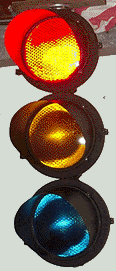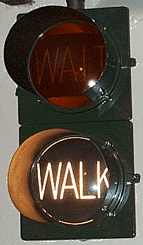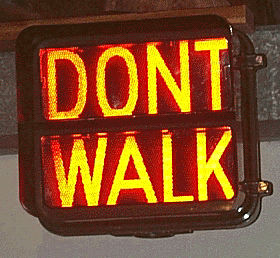Econolite Traffic
Signals
|
These signals are identical short groove back 8 inch signals. The visors on these signals are interesting to me because they go out from the face of the signal at almost a 90 degree angle, unlike Eagle and Crouse Hinds tunnel visors which have a definite slope down to them. |
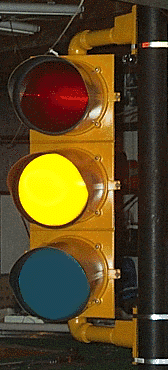 |
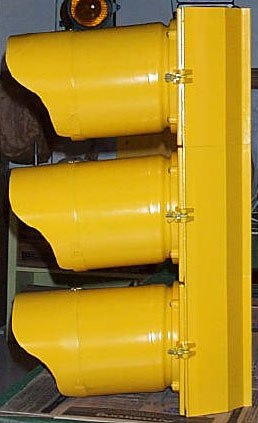 |
|
|
Click on the two way set up to see more about it. |
The signal above has 3M adapters in place of standard lenses and visors. |
||
| Twelve inch pedestrian signal with symbolic commands lenses. Most modern pedestrian signals in the United States have square or rectangular lenses. This signal came from British Columbia, Canada. It is all plastic, including the lenses, but the lenses are round. They also have Canadian style HAND MAN symbols. The hand is an outline rather than a solid hand as seen on US signals. The Canadian style walking man has a longer stride than the US version. | 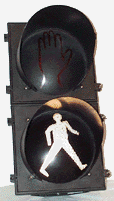
|
Neon Econolite pedestrian signals.
The first signal has an Econolite body and a modular neon unit made by ICC. The second signal, my favorite, has tubes that are bent in the shape of the commands. You can see more about either one by clicking on each picture. The third one has an identical body to the first one, but has exposed tubes bent in the shape of the commands like the second signal.


